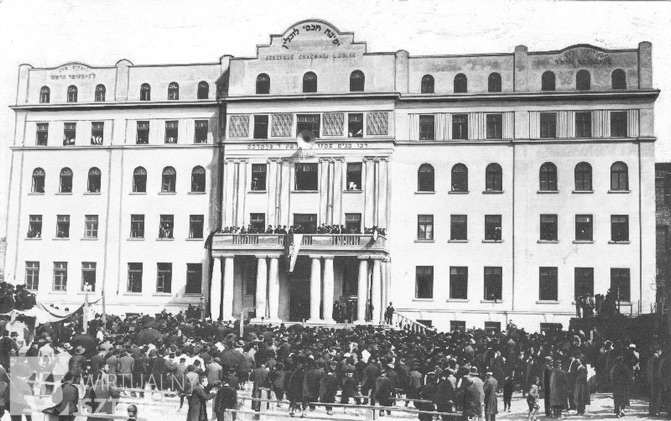Lublin, Poland

Pronunciation: Loob-leen
SE POLAND SHTETL LINKS: Bilgoraj | Chelm | Czemierniki | Dubienka | Grabowiec | Hrubieszow | Izbica | Krasnik | Krasnystaw | Krylow
Laszczow | Opatow | Parczew | Piaski | Radzyn | Rejowiec | Szczebrzeszyn | Tomaszow | Zamosc | Sawin | Swierze | Tyszowce | Wlodawa | Zamosc
~~~~~~~~~~~~~~~~~~~~~~~~~~~~~~~~~~~~~~~~~~~~~~~~~~~~
Lublin is the largest city in Poland east of the Vistula River and is located 161 km south of Warsaw.
Jewish life in Lublin dates back to at least the 14th century. In 1453 King Kazimierz Jagiellonczyk
granted the Lublin Jews the privilege of free trade, which in turn resulted in dynamic growth of the
Jewish population in Lublin by the turn of the 16th and 17th centuries. Rabbi Jakub from Trident
settled in Lublin in 1475, indicating that a well-organized kehilla was likely present at the time.
In 1518 constrictions were placed on Jewish trade within Lublin. By 1535 Jews were banned from
living within the walls of the city. This resulted in dynamic growth of the Jewish quarter (Podzamcze).
In 1518 a yeshiva (Talmudical Academy) was established in town and became well known through
Europe. In 1567 the Jewish residents built a brick synagogue on Jateczna Street. A smaller shul
was built nearby as well. In the 16th century a large part of Podzamcze was flooded by the
Czechowka River. The Jewish quarter expanded to the drained marshy lands around the castle.
Jewish houses were also built in the suburb of Kalinowszczyzna, located northeast of the city.
Moshe Montalto, a Sephardic physician who settled in Poland in the 17th century, built a synagogue
in Lublin where the congregants prayed in the Sephardic rite. See also: Sephardic Jews in Poland.
For more see:

Remember Jewish Lublin - Genealogy Group


